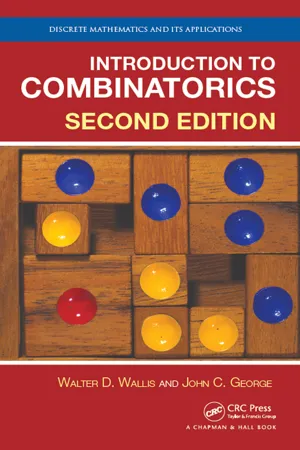Mathematics
Generating Terms of a Sequence
Generating terms of a sequence involves finding the individual elements of a sequence based on a specific rule or pattern. This can be done by applying the given rule to each term in the sequence to generate the subsequent terms. The process of generating terms of a sequence is fundamental in understanding patterns and relationships in mathematics.
Written by Perlego with AI-assistance
Related key terms
2 Key excerpts on "Generating Terms of a Sequence"
- eBook - ePub
- W Bolton(Author)
- 2012(Publication Date)
- Routledge(Publisher)
sequence because they are stated in a definite order, i.e. 1 followed by 3 followed by 5, etc. In the above sequence of 1, 3, 5, 7, 9, each successive member is formed by adding 2 to the previous member. Another example of a sequence is money in an interest-earning bank account. Initially there might be, say, £100 in the account. If it earns interest at the rate of, say, 10% per year then after 1 year there will be £110 in the account. At the end of the next year there will be £121 in the account. At the end of the next year £132.1. The sequence of numbers describing the amount in the account at the ends of each year are:£100 £110 £121 £132.1 We have a sequence of numbers where there is a definite relationship between successive values.The term series is used for the sum of the terms of a sequence. There are many instances in mathematics were we have values which we can express as series and so aid calculations. A particular useful series is termed the binomial series (or binomial theorem) and is frequently used to simplify engineering expressions. In this chapter we consider the arithmetic, geometric and binomial series.7.2 Sequences
The term sequence is used for a set of numbers in a definite order. Thus 1, 2, 3, 4, 5 is a sequence where it is easy to see there is a definite order in forming each member of the set. We can describe the terms in the sequence by stating the law by which the sequence is formed as: add 1 to the previous term. Thus the sequence 1, 2, 3, 4, 5 is obtained by starting with a 1 and then adding 1 to it to obtain the next term, then adding 1 to it for the next term and so on for each successive term in the sequence. The sequence 3, 6, 12, 24, 48 is obtained by starting with a 3 and then multiplying it by 2 to give the next term, then multiplying by 2 for the next term and so on for each successive term. The sequence 2, 4, 16, 256 is obtained by starting with a 2, then squaring it to obtain the next term and so squaring each term in sequence. The following sections discuss some of the common forms of sequences.When a series finishes after a certain number of terms it is said to be finite; when there is an unending number of terms it is said to be infinite.Revision1 Determine the laws governing the numbers in the following sequences:(a) 2, 4, 6, 8, (b) 5, 10, 20, 40, (c) 1, −1, 1, −1.7.2.1 Arithmetic sequence
An arithmetic sequence (sometimes called an arithmetic progression) is one where each term is formed from the previous one by simply adding a constant value. Thus if a is the first term and d - eBook - ePub
- Walter D. Wallis, John C. George(Authors)
- 2016(Publication Date)
- Chapman and Hall/CRC(Publisher)
Chapter 6Generating Functions and Recurrence Relations6.1 Generating Functions
Some kinds of combinatorial calculations are modeled by the behavior of infinite power series or even finite power series (i.e., polynomials). For instance, we considered in Chapter 2 how to determine the number of ways of selecting k items from a set of n; for simplicity, we will consider n − 4, k = 2. Suppose we wish to multiply (1 + x1 )(1 + x2 )(1 + x3 )(1 + x4 ). In the product, we ask how many terms of the form xi xj there will be; clearly,of them, since that is how many ways we can choose two of the factors to contribute an xi . Now, if we set x1 = x2 = x3 = x4 = x, the product is the polynomial (1 + x)4 . The coefficient of x2 in this product is(= 64 2)(The reader will recall that this subscripting technique is how we proved Theorem 2.3, the Binomial Theorem.) In the same way, some numbers of combinatorial interest (such as a sequence of integers) have properties that become clear or easier to prove when they are used as coefficients of a polynomial or an infinite series. These considerations motivate us to define the generating function of a sequence a0 , a1 , … to be the formal power series(= 64 2).∑i ≥ 0a ix iThe expression formal power seriesindexformal power series is understood to mean that we do not evaluate the power series at any point, or concern ourselves with the question of convergence necessarily. Indeed, some uses of generating functions do not require infinite series at all; in this case we shall assume that an = 0 for all n greater than some specific integer N.Example 6.1: Suppose we wish to buy a dozen donuts from a shop with varieties v1 , v2 , v3 , and v4 . We want between three and five donuts of variety v1 (because the shop has only 5 available, and at least three people will want one); similarly, we require 1 ≤ |v2 | ≤ 10, 4 ≤ |v3 | ≤ 6, and 0 ≤ |v4
Learn about this page
Index pages curate the most relevant extracts from our library of academic textbooks. They’ve been created using an in-house natural language model (NLM), each adding context and meaning to key research topics.

